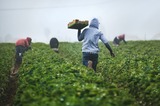
Do you have an idea for improving this content? We’d love your input.
- Subject:
- Agriculture
- Forestry and Agriculture
- Material Type:
- Textbook
- Author:
- Anna McCollum
- Carrie Walker
- Madonna Kemp
- Date Added:
- 01/18/2023

Do you have an idea for improving this content? We’d love your input.
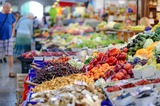
Did you have an idea for improving this content? We’d love your input.

Did you have an idea for improving this content? We’d love your input.

Did you have an idea for improving this content? We’d love your input.
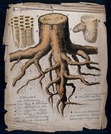
Did you have an idea for improving this content? We’d love your input.
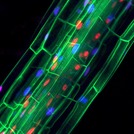
Red and cyan fluorescent proteins marking plant cell nuclei. Fernan FedericiCC-BY-NC-SA-2.0 Botany by Melissa Ha, Maria Morrow & Kammy Algiershttps://bio.libretexts.org/Bookshelves/Botany/Botany_(Ha_Morrow_and_Algiers)A Photographic Atlas for Botany by Maria Morrow https://bio.libretexts.org/Bookshelves/Botany/A_Photographic_Atlas_for_Botany_(Morrow)Introduction to Botany By Alexey Shipunovhttps://bio.libretexts.org/Bookshelves/Botany/Introduction_to_Botany_(Shipunov)Plant Anatomy and Physiology by Sean Bellairshttps://bio.libretexts.org/Bookshelves/Botany/Book%3A_Plant_Anatomy_and_Physiology_(Bellairs)Did you have an idea for improving this content? We’d love your input.
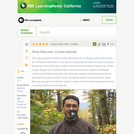
In this video profile produced for Teachers' Domain, meet conservationist Steve MacLean, an Inupiaq from Barrow, Alaska, who works to preserve the health of the Bering Sea ecosystem.

In this activity, students build a water filter with activated carbon, cotton and other materials to remove chocolate powder from water.

Students learn about contact stress and its applications in engineering. They are introduced to the concept of heavy loads, such as buildings, elephants, people and traffic, and learn how those heavy loads apply contact stress. Through the analysis of their own footprints, students determine their contact stress.

In this course, the structure of biomolecules namely carbohydrates and proteins are given in detail.
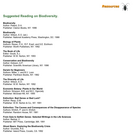
This reference list has more than 25 books on biodiversity. For each title, the book's author, publisher, and publication date are given. The diverse list includes broad introductions to biodiversity, insightful looks at evolution and extinction, examinations of the partnership between insects and flowers, portraits of vanishing species and explorations of the factors contributing to a global biodiversity crisis.
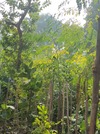
Created for environment sustainability.
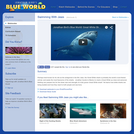
Perhaps best known for its role as the antagonist in the film Jaws, the Great White shark is probably the worldŰŞs most feared animal, and easily the most fearsome of the sharks. In this video, Jonathan travels to Mexico to meet a Great White up close and personal. Nothing can prepare him for the sheer size and strength of a fully grown Great White shark! He learns how white sharks are being studied and how they react to both people and sea lions. Please see the accompanying study guide for educational objectives and discussion points.

When manatees were first seen by Columbus, he thought they were mermaids..but he had been at sea for a long time! Today these gentle marine mammals are threatened by loss of habitat and collisions with boats. This video segment explores the endangered manatees of Florida and their struggle to survive, as well as some of the people who are working to save them. Please see the accompanying lesson plan for educational objectives, discussion points and classroom activities.
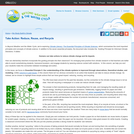
The Take Action column in the free, online magazine Beyond Weather and the Water Cycle suggests actions young people (K-grade 5) can take to reduce the impacts of climate change. The magazine examines the recognized essential principles of climate literacy and the climate sciences as well as the guiding principle for informed climate decisions.
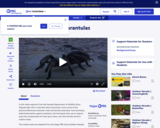
This video segment from the Nevada Department of Wildlife looks at tarantulas' survival skills and their habitat.
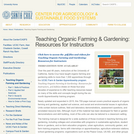
Published by the UC Santa Cruz Center for Agroecology and Sustainable Food Systems, the 600-page manual covers practical aspects of organic farming and gardening, applied soil science, and social and environmental issues in agriculture. Units contain lecture outlines for instructors and detailed lecture outlines for students, field and laboratory demonstrations, assessment questions, and annotated resource lists. Although much of the material has been developed for field or garden demonstrations and skill building, most of the units can also be tailored to a classroom setting.The training manual is designed for a wide audience of those involved in teaching farming and gardening, including colleges and universities with programs in sustainable agriculture, student farms or gardens, and on-farm education programs; urban agriculture, community garden, and farm training programs; farms with internships or apprenticeships; agriculture extension stations; school gardening programs; organizations such as the Peace Corps, US AID, and other groups that provide international training in food growing and ecological growing methods; and master gardener programs.

In this video adapted from Earth Island Institute, meet a high school student who educated her community about how a coal-burning power plant was contributing to asthma and other health problems there.
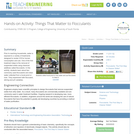
Prior to reaching households, water is exposed to a variety of treatments designed to render it fit for human consumption and use. One of the first treatment steps is the removal of suspended solids using chemical additives called flocculants. In this activity, students learn about two commonly used flocculants and clean water collected from a local pond or river. They experiment with flocculant, stirring and pH variables.
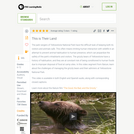
Examine how the human/grizzly relationship has changed since the closing of the Yellowstone dumps, and also learn about the challenges posed to both humans and bears, in this video segment from Nature.